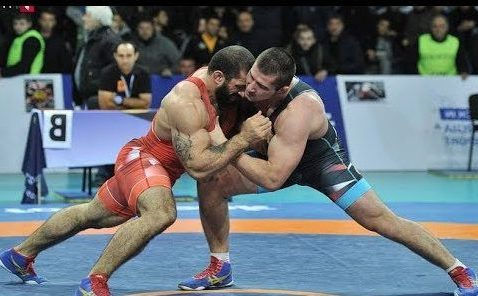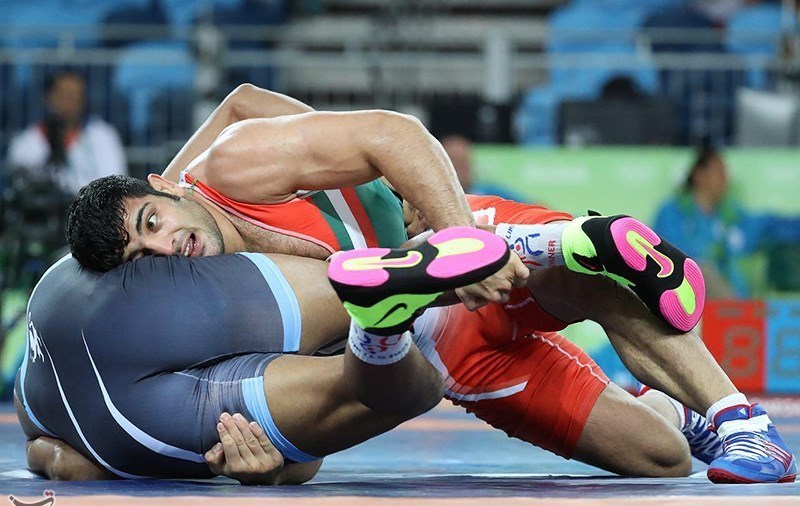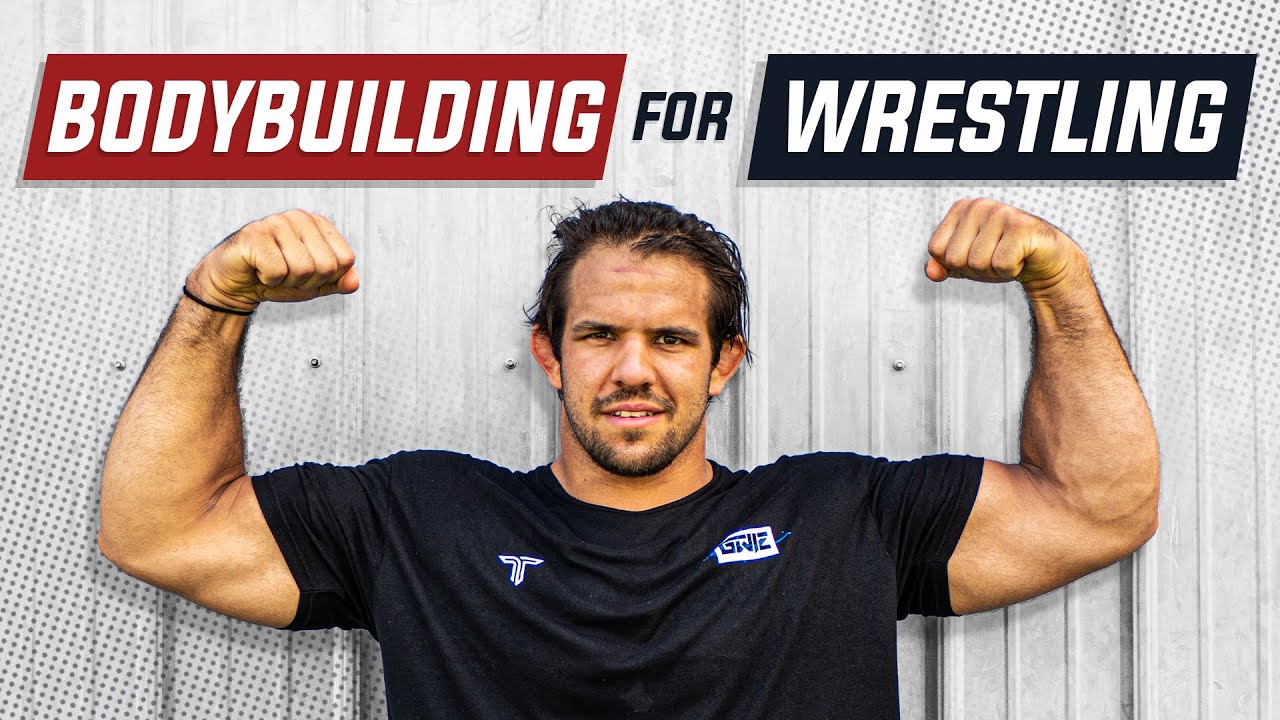Know About Secret Conversation Between Wrestlers in the Ring
Wrestling is a form of entertainment that has captured the hearts of many fans worldwide. The sport’s physicality and the matches’ storytelling aspect have made it a unique form of entertainment that draws in a large audience. However, many fans may need to be aware of the importance of communication in wrestling, particularly in the ring. During high-intensity matches, what do wrestlers say to each other? Is it all trash talk, or do they strategize with each other? In this blog, we will explore the types of communication between wrestlers in the ring and the importance of effective communication in creating a safe and engaging experience for both the wrestlers and the fans.

What is it called when wrestlers talk?
When wrestlers engage in verbal exchanges or monologues to entertain the audience or build up rivalries, it’s commonly referred to as “promos” or “promos segments.” These segments involve wrestlers using microphone time to deliver speeches, trash talk, or storytelling to enhance the drama and excitement of their matches or storylines. Promos play a significant role in shaping the narrative of professional wrestling, allowing wrestlers to showcase their personalities, charisma, and acting skills, all of which contribute to the overall entertainment value of the sport.
These “promos” are a fundamental aspect of professional wrestling’s entertainment factor. They often take place in the ring, backstage, or even during interviews, adding depth to the characters and feuds in the wrestling world. Wrestlers use promos to express their motivations, taunt opponents, or rally the crowd behind them.
Promo skills are highly valued in professional wrestling as they allow wrestlers to connect with the audience on an emotional level. A well-delivered promo can elicit cheers, boos, or a range of reactions, creating a stronger engagement between the fans and the wrestlers. Effective promos contribute to the storytelling aspect of wrestling, building anticipation for upcoming matches and events.
Importance of Communication in Wrestling
Effective communication is essential in wrestling for several reasons. Firstly, it helps to ensure the safety of the wrestlers. Wrestling moves can be dangerous and potentially life-threatening, so wrestlers need to communicate with each other to avoid accidents or injuries. They use verbal cues and hand signals to indicate the next move or to confirm the opponent’s position.
Secondly, communication helps to enhance the storyline of the match. Wrestlers use their words and body language to convey emotions, establish their characters, and build tension with their opponents. Good communication can make a game more engaging and exciting for the audience.
Thirdly, communication is crucial in building fan engagement. Fans enjoy watching wrestlers interact with each other, whether it’s through trash talk or displays of sportsmanship. A well-communicated match can leave a lasting impression on fans and keep them returning for more.
However, communication in wrestling can also be challenging. Wrestlers may come from different backgrounds and speak other languages, making communicating difficult. Misunderstandings can lead to mistakes in the ring, which could be dangerous for the wrestlers. Wrestlers may become too reliant on pre-planned moves, leading to a lack of spontaneity and authenticity in their matches.
In conclusion, effective communication is crucial in wrestling for the wrestlers’ safety, the match’s success, and the fans’ engagement. Wrestlers must communicate clearly and efficiently to ensure the game runs smoothly and creates an unforgettable experience for the audience.
Examples of Communication in the Ring
There are several examples of communication that take place between wrestlers in the ring. These can be verbal or non-verbal and are used to convey information, emotions, and strategy. Here are a few examples:
- Trash talk: This is the most well-known type of communication in wrestling. Wrestlers use trash talk to taunt their opponents and get under their skin. This can be done through verbal insults, mocking gestures, or facial expressions.
- Strategizing: Wrestlers may communicate with each other to plan out their moves or to coordinate their actions. They may use hand signals or verbal cues to indicate what activity they will do next or to confirm their opponent’s position.
- Encouragement: Wrestlers may also use communication to motivate each other. They may offer encouragement or praise to their opponents, exceptionally if they’ve executed a problematic move or shown impressive athleticism.
- Promos: Promos are pre-match or post-match speeches given by wrestlers to the audience. These are usually scripted, but they can also be improvised. Promos allow wrestlers to showcase their characters, build tension with their opponents, and engage with the audience.
- In-ring conversations: Sometimes, wrestlers will have conversations with each other during the match. This can be done to discuss strategy, to check on the well-being of their opponent, or to add to the game’s entertainment value.
These are just a few examples of the types of communication in the wrestling ring. Effective communication is crucial in wrestling for the safety of the wrestlers and the success of the match.
Recap of the importance of communication in wrestling
To recap, communication is essential in wrestling for several reasons. Firstly, it ensures the safety of the wrestlers. Wrestling moves can be dangerous and potentially life-threatening, so wrestlers need to communicate with each other to avoid accidents or injuries. They use verbal cues and hand signals to indicate the next move or to confirm the opponent’s position.
Secondly, communication helps to enhance the storyline of the match. Wrestlers use their words and body language to convey emotions, establish their characters, and build tension with their opponents. Good communication can make a game more engaging and exciting for the audience.
Thirdly, communication is crucial in building fan engagement. Fans enjoy watching wrestlers interact with each other, whether it’s through trash talk or displays of sportsmanship. A well-communicated match can leave a lasting impression on fans and keep them returning for more.
However, communication in wrestling can also be challenging. Wrestlers may come from different backgrounds and speak other languages, making communicating difficult. Misunderstandings can lead to mistakes in the ring, which could be dangerous for the wrestlers. Wrestlers may become too reliant on pre-planned moves, leading to a lack of spontaneity and authenticity in their matches.
In conclusion, effective communication is crucial in wrestling for the wrestlers’ safety, the match’s success, and the fans’ engagement. Wrestlers must communicate clearly and efficiently to ensure the game runs smoothly and creates an unforgettable experience for the audience. Good communication can elevate a wrestling match from a simple display of physical prowess to a proper form of art and entertainment.
Encouragement for wrestlers to prioritize communication in their matches
For wrestlers, communication is not just a helpful tool but a necessary one. In performing at the highest level and ensuring the safety of themselves and their opponents, communication must be prioritized in every match.
One way to encourage wrestlers to prioritize communication is to emphasize the importance of safety. Wrestling moves can be dangerous, and miscommunication can lead to severe injuries. By communicating effectively, wrestlers can reduce the risk of accidents and ensure they can perform at their best without unnecessary risks.
Another way to encourage wrestlers to prioritize communication is to emphasize the importance of storytelling. Wrestling is not just about physical feats but about creating a compelling narrative that engages the audience. Good communication can help establish characters, build tension, and create moments that stick in the viewers’ minds.
Finally, wrestlers should prioritize communication to show respect for their opponents. Wrestling is a physical and competitive sport, but it is also a form of entertainment that relies on the skill and dedication of all involved. By communicating effectively, wrestlers can ensure that they show their opponents the respect they deserve and contribute to an enjoyable and memorable match for everyone involved.
In conclusion, effective communication is a crucial aspect of wrestling that should be prioritized in every match. It helps to ensure safety, enhance storytelling, and show respect for opponents. Wrestlers can elevate their performances by prioritizing communication and creating truly unforgettable games.
Do wrestlers talk to each other during the match?
Yes, wrestlers do talk to each other during the match. In fact, communication is an essential aspect of wrestling, and wrestlers use a variety of methods to communicate with each other.
One way that wrestlers communicate is through verbal cues. They may call out the name of a particular move they want to perform or shout instructions to their opponent. This helps to ensure that both wrestlers are on the same page and that the match proceeds safely and smoothly.
Another way that wrestlers communicate is through non-verbal cues, such as hand signals or body language. For example, a wrestler may signal to their opponent which way to turn or which direction to move in. They may also use facial expressions or gestures to convey emotion or intent.
Wrestlers may communicate more subtly, such as through breathing patterns or minor adjustments in body positioning. These cues are often picked up subconsciously by the other wrestler, helping them to anticipate the next move or transition smoothly to the following sequence of the match.
However, it’s important to note that not all communication in wrestling is verbal. Some wrestlers may remain silent during the match, relying instead on non-verbal and physical cues to communicate with their opponent. Additionally, some wrestlers may use silence as a strategy to lull their opponent into a false sense of security before executing a surprise move.
In conclusion, wrestlers talk to each other during the match, using a variety of verbal and non-verbal cues to communicate. Effective communication is crucial in wrestling, helping to ensure safety, enhance storytelling, and create a memorable match for both wrestlers and fans.
What do they say at the end of a wrestling match?
At the end of a wrestling match, it is common for wrestlers to show sportsmanship and respect toward each other. Depending on the game and the wrestlers’ relationship, this can take different forms.
In some cases, wrestlers may shake hands with each other as a sign of respect and acknowledgment of a well-fought match. This is particularly common in amateur wrestling and different styles of wrestling where sportsmanship is emphasized.
In professional wrestling, the ending of the match may be more theatrical, with one wrestler typically being declared the winner and celebrating while the other wrestler retreats from the ring. However, even in this context, it is still common for wrestlers to show respect toward each other after the match.
Wrestlers may sometimes hug or embrace each other as a sign of mutual respect and appreciation. This is especially common when wrestlers have a close personal or professional relationship.
In addition to physical gestures, wrestlers may exchange words at the end of a match. This could involve congratulating each other on a well-fought game, thanking each other for their efforts, or expressing respect for their opponent’s skills.
Ultimately, how wrestlers interact at the end of a match reflects the values and norms of the wrestling community. While the specifics may vary depending on the context, sportsmanship and respect are typically valued and emphasized in wrestling and are often demonstrated through gestures and words at the end of a match.
What is it called when a wrestler talks?
When a wrestler talks during a match, it is commonly called “cutting a promo” or simply “cutting a promo.”
A promo is short for “promotional interview” and refers to a segment where a wrestler speaks to the audience, usually to hype up an upcoming match or to further develop their character. Cutting a promo involves delivering a scripted or improvised speech, often with much energy and charisma, to engage the audience and build excitement for the match.
Cutting a promo can be a crucial part of a wrestler’s performance, as it allows them to showcase their personality, charisma, and in-ring skills. A well-executed promo can help to create a connection between the wrestler and the audience and can help to establish the wrestler’s character and storyline.
Promos can take many forms, from serious and intense to comedic and lighthearted. They may involve insults directed towards an opponent, boasting about the wrestler’s abilities, or statements about the wrestler’s motivations and goals.
In professional wrestling, cutting a promo is often as crucial as in-ring performance, as it helps create the larger-than-life characters and storylines that make wrestling entertaining.
FAQs
Do wrestlers always speak to each other during a match?
No, only sometimes. While communication is integral to wrestling, it’s not necessarily constant throughout the match. Sometimes wrestlers may remain silent or use non-verbal cues instead.
Can wrestlers understand each other even if they speak different languages?
It’s possible, but it can be challenging. Many wrestlers can pick up on non-verbal cues and body language to understand their opponent’s intent, even if they don’t speak the same language. In some cases, wrestlers may also work with a translator to communicate more effectively.
Do wrestlers ever talk strategy during a match?
Wrestlers may communicate with each other about the direction of the match and their planned moves. This helps ensure that the match flows smoothly and safely.
Are wrestlers always friendly with each other in the ring?
It depends on the situation. While many wrestlers respect their opponents and show sportsmanship in the ring, there are also instances where wrestlers may be intentionally aggressive or disrespectful towards each other as part of the storyline.
Do wrestlers generally break character and speak to each other during a match?
It’s not common, but it can happen. Wrestlers may need to communicate about a safety concern or other issue that requires breaking character. However, in most cases, wrestlers maintain their characters and personas throughout the match.


